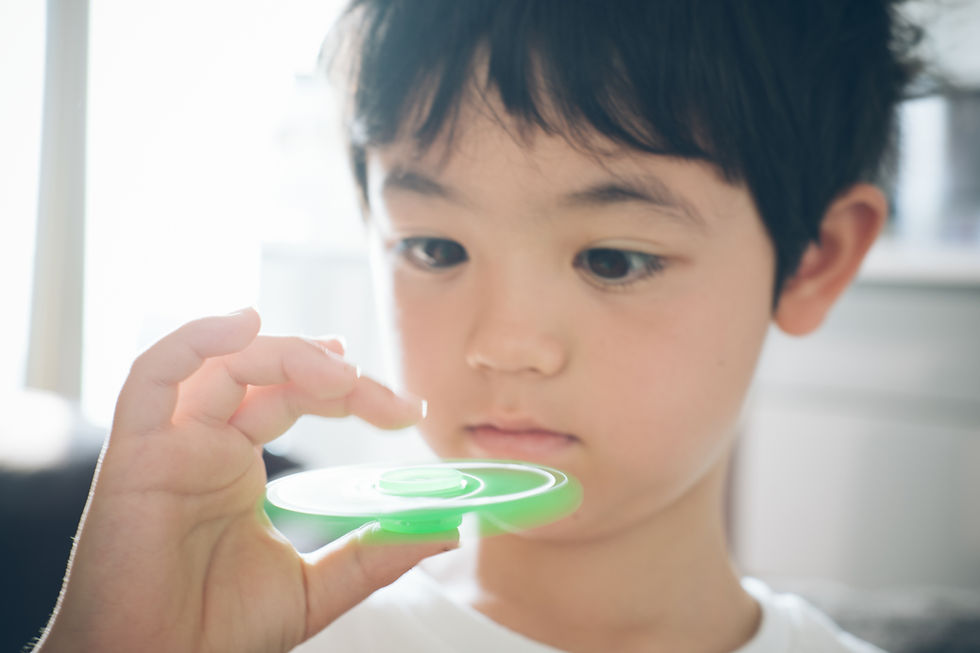The Utility of Hyperfixation in Individuals with Intellectual and Developmental Disabilities: A Strength to Nurture, Not Suppress
- Devin Suarez
- 15 hours ago
- 3 min read

In the world of developmental support, the word “fixation” often carries a negative tone. Caregivers may see it as a behavior to redirect or something that gets in the way of “normal” functioning. But what if hyperfixation: that intense, focused immersion on a specific topic, object, or activity, isn’t a problem at all?
What if it’s a window into potential?
Understanding Hyperfixation Beyond the Stereotype
Hyperfixation is common among individuals with autism spectrum disorder (ASD), attention-deficit/hyperactivity disorder (ADHD), and other developmental profiles. It is a form of deep cognitive engagement where a person’s attention narrows to one meaningful subject or activity. From the outside, it may look repetitive or obsessive, but internally, it often represents a state of clarity, peace, and purpose.
When someone with ASD spends hours organizing collectibles, drawing detailed maps, or studying a single topic, their brain isn’t malfunctioning, it’s focusing in the way it was built to. This “monotropic” style of attention (Murray et al., 2005) prioritizes depth over breadth, allowing for remarkable skill development when properly nurtured.
The Untapped Power of Deep Focus

Research increasingly suggests that autistic individuals excel when environments allow them to channel this focus constructively. Hyperfixations can lead to:
Skill mastery (e.g., art, coding, mechanics, or memory work)
Emotional regulation, as repetitive engagement provides structure and calm
Identity formation, offering a sense of purpose and competence
Social bridges, since shared interests can become pathways to connection
In therapeutic or educational settings, what looks like “rigidity” can become a learning strength when adults use the individual’s interest as an entry point for communication, instruction, or socialization (Grove et al., 2018).
Nurturing Strengths Instead of Forcing Weaknesses

Temple Grandin (2014) has long emphasized that the key to supporting neurodivergent learners lies in recognizing where their minds excel rather than forcing them to conform to areas of struggle. She notes that many children who struggle with abstract algebra, for instance, may have extraordinary visual-spatial reasoning or mechanical insight. A child who builds intricate structures or intuitively understands how things move may learn best through hands-on geometry, design, or mechanics, not endless paper equations.
When parents or teachers nurture these inherent talents, children gain confidence and competence, and often later return to their weaker subjects with renewed motivation. Grandin’s point is simple but profound: focus on what the brain does well first. Skills bloom from strength, not shame.
“Focus on what the brain does well first. Skills bloom from strength, not shame.“
How Parents and Caregivers Can Nurture Healthy Fixation
Observe Without Judging
Before redirecting, ask yourself why the person gravitates to that focus. Does it calm them? Give them confidence? Offer predictability in a chaotic world?
Integrate Interests Into Daily Learning
If a child is fascinated by trains, use train examples to teach counting, language, or history. Engagement always follows interest (Koenig & Williams, 2017).
Balance Encouragement With Boundaries
Structure is key. Allow immersion but pair it with gentle transitions. For example, “Let’s spend 20 minutes on your drawings, then we’ll eat lunch and come back.”
Celebrate Progress, Not Just Behavior
Hyperfixation often leads to visible growth. Recognize achievements (“You learned all the dinosaur names!”) rather than labeling them as obsessions.
Use Strengths as Vocational Clues
Many autistic adults transform early fixations into fulfilling careers, from engineering and design to caregiving and advocacy (Baron-Cohen et al., 2009). Parents can help by seeing these fixations as prototypes for purpose.

A Shift in Perspective
When we stop pathologizing focus and start partnering with it, we unlock something powerful; not just in those we support, but in ourselves as caregivers.
Hyperfixation is not a barrier to development. It’s a compass pointing toward meaning. Our job isn’t to take it away, but to build a world where it can thrive.
References
Baron-Cohen, S., Ashwin, E., Ashwin, C., Tavassoli, T., & Chakrabarti, B. (2009). Talent in autism: Hyper-systemizing, hyper-attention to detail and sensory hypersensitivity. Philosophical Transactions of the Royal Society B: Biological Sciences, 364(1522), 1377–1383. https://doi.org/10.1098/rstb.2008.0337
Grandin, T. (2014). The autistic brain: Helping different kinds of minds succeed. Mariner Books.
Grove, R., Hoekstra, R. A., Wierda, M., & Begeer, S. (2018). Special interests and subjective wellbeing in autistic adults. Autism Research, 11(5), 766–775. https://doi.org/10.1002/aur.1920
Koenig, K. P., & Williams, L. H. (2017). Characterization and utilization of preferred interests: A survey of adults on the autism spectrum. Occupational Therapy in Mental Health, 33(2), 129–140. https://doi.org/10.1080/0164212X.2016.1248877
Murray, D., Lesser, M., & Lawson, W. (2005). Attention, monotropism and the diagnostic criteria for autism. Autism, 9(2), 139–156. https://doi.org/10.1177/1362361305051398





Comments